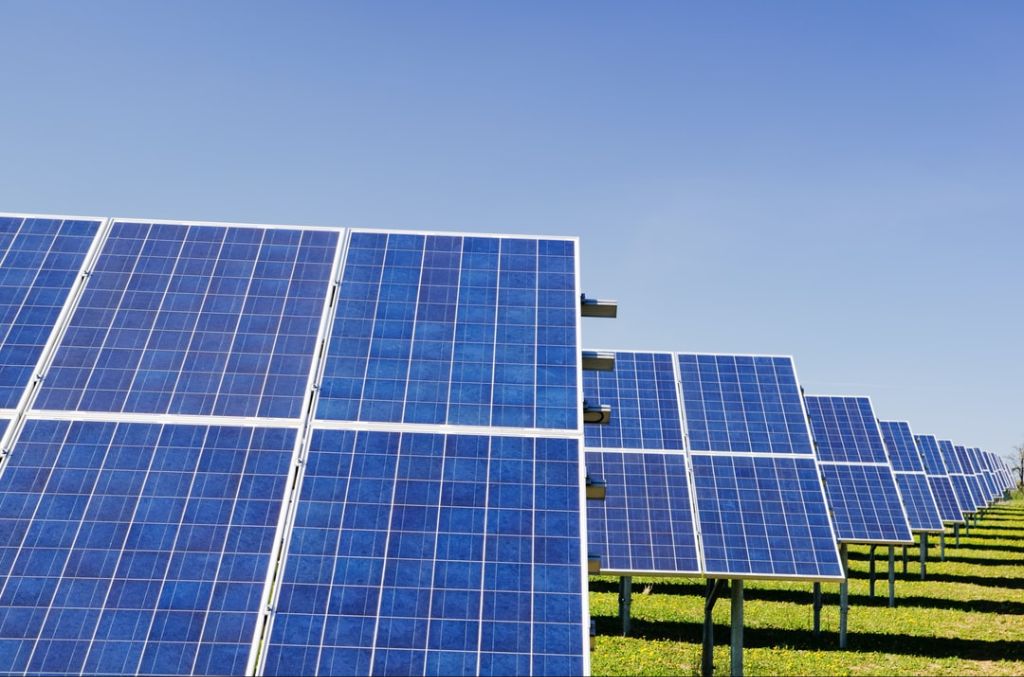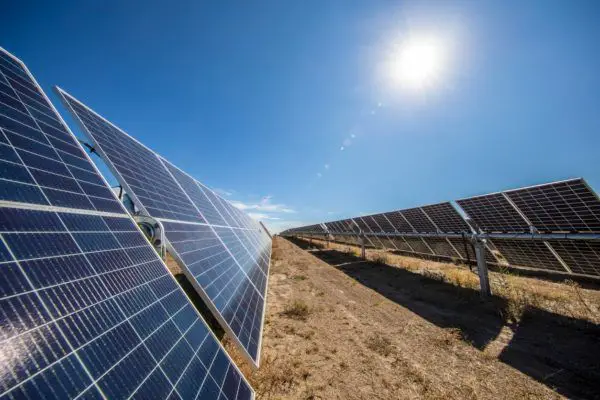Is Oklahoma A Good Place To Generate Solar Energy?

Oklahoma has moderate potential for generating solar energy due to its location, infrastructure, electricity prices, and policies. However, there are still some challenges around grid infrastructure and installation costs. In this article, we will examine Oklahoma’s solar resources, infrastructure, electricity prices, policies, grid capacity, installation costs, payback periods, and environmental impact to determine if it is a suitable location for solar energy generation. By weighing the benefits and drawbacks, we will reach a conclusion on whether Oklahoma is a favorable state for solar power.
Solar Potential
Oklahoma has excellent solar resource quality across the state, with some regional variation. According to the National Renewable Energy Laboratory, the sunniest areas in Oklahoma are in the western and central parts of the state which receive around 5.5-6.5 kWh/m2/day. Eastern Oklahoma is slightly less sunny, averaging 4.5-5.5 kWh/m2/day. The annual average daily total sunlight hours range from 5.5 to 6.5 hours per day.
Compared to other states, Oklahoma ranks relatively high for solar potential. It has the 10th highest solar resource potential out of 50 states according to the U.S. Department of Energy. States with higher solar potential are generally located in the Southwest like Arizona, New Mexico, and California which receive over 6.5 kWh/m2/day on average.
Solar Infrastructure
Oklahoma currently has around 298 megawatts of utility-scale solar capacity across 12 solar arrays, according to the U.S. Energy Information Administration (Source). The largest solar installation is the 100 MW OU Spirit solar facility completed by Oklahoma Gas & Electric in 2020, which can generate enough electricity to power over 77,000 homes (Source).
The amount of solar capacity in Oklahoma has grown significantly over the past decade. In 2012, the state had less than 1 MW of solar capacity. Growth really took off around 2016-2017, and annual installations have continued to rise each year since then. Key projects driving growth include the aforementioned OU Spirit facility, the 50 MW Covington Solar facility owned by Public Service Co. of Oklahoma, and the 30 MW Hinton Solar Project owned by Oklahoma Municipal Power Authority (Source).
Major solar companies active in Oklahoma include Oklahoma Gas & Electric, Public Service Co. of Oklahoma, Raytheon Technologies, and Diversified Energy. These companies, along with organizations like the Oklahoma Municipal Power Authority, have plans to continue expanding solar energy production across the state in the coming years.
Electricity Prices
According to the Dallas Fed, Oklahoma has below-average electricity rates for homes and businesses. In 1998, the average price per kWh for residential customers in Oklahoma was 6.05 cents, compared to the national average of 8.51 cents per kWh. For industrial customers, the average was 3.33 cents per kWh in Oklahoma, lower than the national average of 4.21 cents (Southwest Economy, Issue 3, May-June, 1998).
While Oklahoma’s electricity prices remain below average, they have been increasing over time. From 1998 to 2021, the average residential electricity rate in Oklahoma rose from 6.05 cents per kWh to 10.57 cents per kWh. However, this is still below the national average residential rate of 14.19 cents per kWh as of November 2022 (EIA).
The cost advantages for industrial customers have also declined but remain lower than average. In 2021, the Oklahoma average industrial rate was 5.81 cents per kWh, compared to the national average of 6.79 cents per kWh (EIA).
Solar Policies
Oklahoma has some key solar policies in place to incentivize solar adoption, though not as many as leading solar states like California. The main solar incentives in Oklahoma are:
The federal Solar Investment Tax Credit allows homeowners to deduct 30% of their solar installation costs from their federal taxes (source). This applies to both residential and commercial installations.
Net metering is available from some Oklahoma utilities like OG&E, allowing solar customers to get credit for excess power sent back to the grid (source). However, Oklahoma does not have a statewide net metering mandate.
Oklahoma currently has no state tax credits, rebates, or renewable energy mandates specifically for solar. This is less supportive than leading solar states like California which have additional incentives beyond the federal ITC (source).
Overall, the lack of strong solar incentives in Oklahoma makes it less competitive than other regions for returns on solar investments. But the 30% federal tax credit still allows for solar adoption, especially as panel costs continue to decrease.
Grid Infrastructure
Oklahoma’s electricity grid is part of the Southwest Power Pool (SPP), which manages the electric grid across 17 central and western U.S. states (The Transformation of the Energy Sector). The grid infrastructure in Oklahoma is aging, with over 50% of transmission lines over 25 years old (State Brief: Oklahoma). Investments in grid upgrades and modernization will be needed for the grid to effectively integrate increasing amounts of renewable energy.
The SPP has identified over $10 billion in transmission projects needed in Oklahoma between 2021-2030 to maintain reliability as more renewable energy comes online (State Brief: Oklahoma). The SPP is working to coordinate grid planning and operations across its territory to support growth in renewable energy. Oklahoma’s grid infrastructure will require continued upgrades and investment to facilitate the integration of utility-scale and distributed solar energy.
Installation Costs
The average cost to install solar panels in Oklahoma for homes and businesses is around $3-4 per watt, according to the EnergySage (https://www.energysage.com/local-data/solar-panel-cost/ok/). Based on 2020 data, the median solar panel system size in Oklahoma is around 6 kilowatts. Therefore, the typical cost to install solar panels on a home in Oklahoma lands between $18,000 and $24,000 before incentives.
The major cost factors for residential solar panel installation in Oklahoma include:
- Solar equipment – $9,000 to $12,000
- Permitting and inspection fees – $200 to $500
- Labor and installation – $9,000 to $12,000
Compared to neighboring states like Texas and Kansas, installation costs in Oklahoma are a bit higher, largely due to fewer solar companies operating in the state. However, costs have been steadily declining in Oklahoma as solar energy becomes more mainstream.
Payback Period
The payback period for solar panels in Oklahoma is around 10-13 years according to recent analysis. This is how long it takes on average to recoup the costs of installing a solar energy system through electricity bill savings. Oklahoma’s payback period is slightly longer than the national average of 8-12 years, but still makes solar a sound long-term investment.
The payback period can vary greatly depending on specific variables like system costs, average electricity rates in your area, net metering policies, and available solar incentives. For example, Energysage estimates a payback period of 10.63 years for Oklahoma based on current solar pricing and average utility rates of 10.57 cents/kWh across the state [1]. Areas like Oklahoma City with higher than average electricity costs could see a quicker payback of under 10 years.
Compared to neighboring states like Texas and Arkansas which have payback periods of 9-11 years, Oklahoma falls on the higher end mostly due to lower average electricity prices. However, with proper system sizing and positioning to maximize sun exposure, solar can still pay itself off faster than other home upgrades.
Environmental Impact
Solar energy has the potential to greatly reduce Oklahoma’s greenhouse gas emissions and pollution from electricity generation. According to the Environmental Defense Fund, Oklahoma’s power plants released over 44 million metric tons of carbon dioxide in 2019, ranking it the 7th highest emitting state for power plant pollution.1 Since solar panels produce no direct emissions while generating electricity, increased solar generation would directly displace fossil fuel sources and lower Oklahoma’s carbon emissions.
Solar energy also benefits air and water quality in Oklahoma. Burning coal and natural gas releases particulate matter, nitrogen oxides, and sulfur dioxide into the air which contributes to smog, acid rain, and respiratory diseases. The Environmental Protection Agency estimates that replacing 1,000 megawatts of coal generation with solar power avoids over 4,000 tons of hazardous air pollutants per year.2 Additionally, solar photovoltaics require practically no water to generate electricity, while fossil fuel plants withdraw billions of gallons of water for cooling and emissions controls.
As of 2019, coal provided 31% and natural gas provided 47% of Oklahoma’s net electricity generation. Increasing solar power would offset generation from these dirty fossil fuel sources and provide cleaner air and water across the state.3 With Oklahoma’s ample solar resource, solar panels could effectively displace a substantial portion of fossil fuels and provide major environmental benefits.
Conclusion
Oklahoma has great potential for solar energy due to its abundant sunlight, sizable solar tax credit programs, and average to high electricity prices. However, despite its natural solar advantages, Oklahoma still lacks in solar infrastructure and installed solar capacity compared to leading solar states.
The main challenges for Oklahoma’s solar growth include lagging policies that fail to incentivize residential and commercial solar adoption compared to other states. Oklahoma also lacks a renewable portfolio standard or strong net metering laws to encourage distributed solar generation. Updating these policies would help drive solar deployment. Additionally, there is room to grow Oklahoma’s solar workforce to support expanded installation and grid integration capabilities.
Overall, Oklahoma has untapped solar resources it could leverage with supportive policies, grid infrastructure investments, and expanded solar incentives. If these opportunities are seized, Oklahoma could become a major solar energy producer and benefit from this clean, renewable power source.






